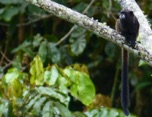FMU Environmental Science and Studies: Facilities

Field Facilities
Wildsumaco Biological Station (WBS)
WBS is a field station located on the east slope of the Andes in Ecuador, an area of incredible biodiversity. FMU students can take a tropical ecology course that takes place mostly at WBS. The station houses up to 18 people in dorm-style accomidations with shared baths and a combined dining and education building. It is a collaborative effort between FMU, University of North Carolina Wilmington and Wildsumaco Wildlife Sanctuary. We also work with colleagues at Pontificia Universidad Católica del Ecuador (PUCE). More can be found at the station website: http://wildsumacobio.org/
Sam and Nell Windham Environmental Center
The Sam and Nell Windham Environmental Center (WEC) is located about 30 minutes from campus in Lamar, SC. The property contains a variety of habitats including an old upland farm field, forests, swamps and a stream. FMU faculty are conducting an environmental restoration project in the old farm fields, restoring them to longleaf pine habitat. Students regularly visit the property at part of their coursework to help monitor the restoration effort, check water quality and sample for a variety of organisms including plants, invertebrates, herps and birds.
Biology Research Area
A short walk from the main science building is the Biology Research Area. Located in the back of campus, this area contains forests, temporary ponds and a small stream. There is also a drift fence located at this location for monitoring amphibians and reptiles. This area is readily accessible for coursework and student research projects.
Laboratory Facilities
The Department of Biology has facilities in McNair Science Building (MSB) and the Leatherman Science Facility (LSF). There is a rooftop greenhouse and green roof at the top of LSF for coursework and research. Dr. Gerald Long maintains an extensive herbarium collection for use in teaching and research. We have equipment for genetic analysis including gel electrophoresis, PCR, etc. Other resources include a departmental computer lab with ArcGIS software, and a wide variety of laboratory and field equipment. Field equipment includes numerous items for both aquatic (water quality meters, nets, seines, traps, a backpack electrofisher, etc.) and terrestrial (increment borers, small mammal traps, spotting scopes, insect nets, plant presses, etc. ) ecosystems.

















